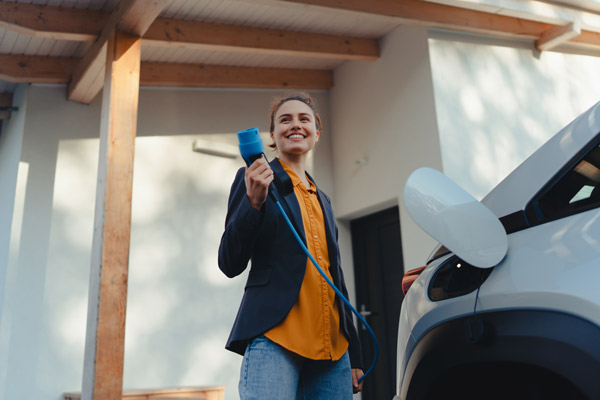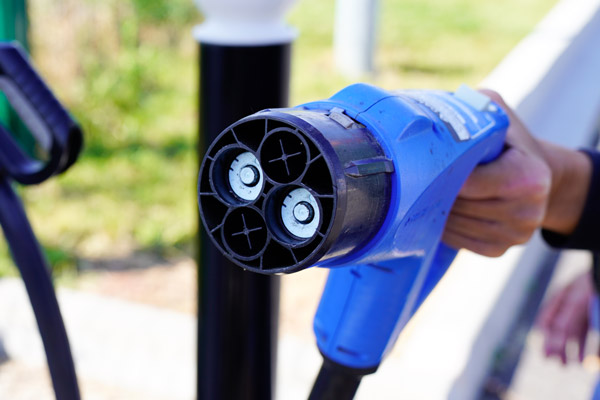How To Clean Your EV Charging Station?
The first step in acquiring the electric car you have always wanted is a good EV charging station. It’s just as vital to maintain and clean your EV charging station as it is for your vehicle.
Fortunately, maintaining and cleaning charging stations is easier than you may have initially believed. So, if you are considering installing an EV charging station, you should consider the cost and time required for its cleaning and maintenance when estimating the installation cost.
Keep reading to learn more about how you can clean and maintain your EV charging station.
Cleaning Your EV Charging Station
Electricity travels at a high intensity through the car’s charging socket, making it a pretty important component. But have you ever asked yourself how to can clean them? You’ve come to the right place.
EV charging stations are simple to clean. We advise using a dry towel on the connector and a moist cloth on the unit’s body.

Although the device is waterproof, keeping the connector dry is crucial. Therefore, we advise shutting the unit off before cleaning it as an added safety measure.
The port itself requires additional work to clean. For example, you may need to clean the connector that connects the device to your automobile if your car is charging slower than it usually does.
To clean the port, carefully sweep a Q-tip over the charging contacts to eliminate any extra dirt. Using any chemicals on charging contacts is not recommended.
Maintaining Your EV Charging Stations
An EV charging station joins an EV to an electricity supply so different electric vehicles, cars and plug-in hybrids can charge as needed.
Maintaining your EV charging station is crucial. Most suppliers include maintenance plans with installations for new clients. These packages are comparable to the AA or RAC assistance you may add to your auto insurance.
There are three different types or levels of EV charging stations. Given that each requires a distinct amount of maintenance and cleaning, it is crucial to understand the difference between them.
The most basic chargers are those that are not networked and have no Internet access. This implies that you cannot compile statistics, monitor problems, balance loads during periods of heavy demand, or charge users a connection fee. These are called non-networked chargers.
Non-networked Level 1 Charging Stations
L1 charging stations deliver 1.3 – 2.4 kW power and plug into a typical 120-volt AC outlet. These are frequently utilized by those who don’t use their EVs daily and are found in private homes.
In general, these Non-networked chargers require little maintenance. However, according to the US Department of Energy, the commercial-grade electrical outlet that the gadget is connected to should be changed regularly.
Your EV charging station’s accessible components should all have regular wear and tear checks, and the system needs to be kept clean. Before servicing any electrical components, always make sure the machine is de-energized.
Non-networked Level 2 Charging Stations
L2 chargers produce 3 – 19 kW AC power and run from 208 to 240 volts. The normal charging time for an EV is 4 to 10 hours.
Level 2 EV chargers are the norm in private residences and public charging locations. However, due to their size and complexity, L2 charging stations are more susceptible to equipment damage than privately operated L1 chargers.
Whether or not the charger is shielded from external variables like the temperature and climate is one factor impacting its condition and need for maintenance. These charging units should be frequently cleaned with a damp cloth, and you should look over any exposed parts for damage.
Level 3 Charging Stations
At 350 kW, level 3 chargers deliver the most amount of power. In addition, unlike Level 1 and Level 2 chargers, Level 3 charging employs DC charging.
These chargers are expensive, so it’s improbable that you’ll find one other than at a public charging point. In addition, because of their complexity, these devices require substantially more maintenance than Level 1 and Level 2 chargers.
Filters, cooling equipment, and much other complex hardware are needed for Level 3 charging stations, all of which require routine maintenance.
Because the quantity of maintenance needed varies by location and anticipated use, owners and operators should develop a service schedule with suppliers before installation.
Networked Charging Stations
These charging stations are a component of a network of interconnected charging stations. These devices also have electrical accessories like buttons, touchscreens, and credit card payment software. As a result, these machines eventually need other upkeep and repairs.
Most problems with networked EV charging stations can be fixed by an electrician. However, it would be best if you were sure your electrician could perform routine maintenance on EV chargers. Manual system reset, and frequent technical debugging may also be necessary.
When Does EV Charging Stations Need Maintenance?
Here are some indicators that your EV charging station needs maintenance.
Physical Damage
Whether because of weather, vandalism, or other issues, EV charging stations are susceptible to physical damage. Public charging stations are more likely to be physically harmed damaged as they are used by everyone.
These external problems can result in issues that make the charger work incorrectly or not at all. Examine and clean the EV charging station’s exterior parts regularly in case any problems need to be fixed.
Insufficient Voltage
At 120V, Level 1 chargers run. This should produce 1.4 kW on average. On the other hand, level 2 chargers need around 240V and produce 6.2 to 7.6 kW of power.
Level 3 charging stations employ DC voltage for faster charging and can produce 50 to 350 kW of power.
Your charging station probably needs maintenance if the output power is less than the average for that level of charger.
Slow Charge
While Level 1 chargers take between 11-20 hours to charge, Level 2 chargers take almost 4 to 10 hours. EVs can be fully charged with a Level 3 charger in 15 minutes to 1 hour.
Slow charging may be caused by low voltage. However, other elements, like chilly conditions, might also shorten charging times. Therefore, if your charging station is charging Vehicles slower than normal, it may be worth checking to see whether it needs to be repaired.
Scheduled Maintenance
Even though there may not be any obvious symptoms that the charging station needs repair, it is a wise idea to be proactive and have your EV charging stations serviced in accordance with a suggested maintenance schedule.
Make sure to adhere to the charging station maintenance guidelines provided by the manufacturer. If you have a maintenance plan through the network of your charger, find out what it includes for routine upkeep and repair.
The price, charge times and maintenance of charging stations vary widely. The best thing you can do to maximize the longevity of your charger station is to be active in cleaning and maintaining it.
This manual is a wonderful place to start if you wish to learn more about how you can maintain various charging station types and how to clean your station. But first, read up on your charging station and find out from the manufacturer what maintenance guidelines and initiatives they recommend.
Remodeling your garage can be tough. Why not make it easy? We have been building garages for Chicago homeowners since 1959. Get a free quote now and start your next garage building project off right.






